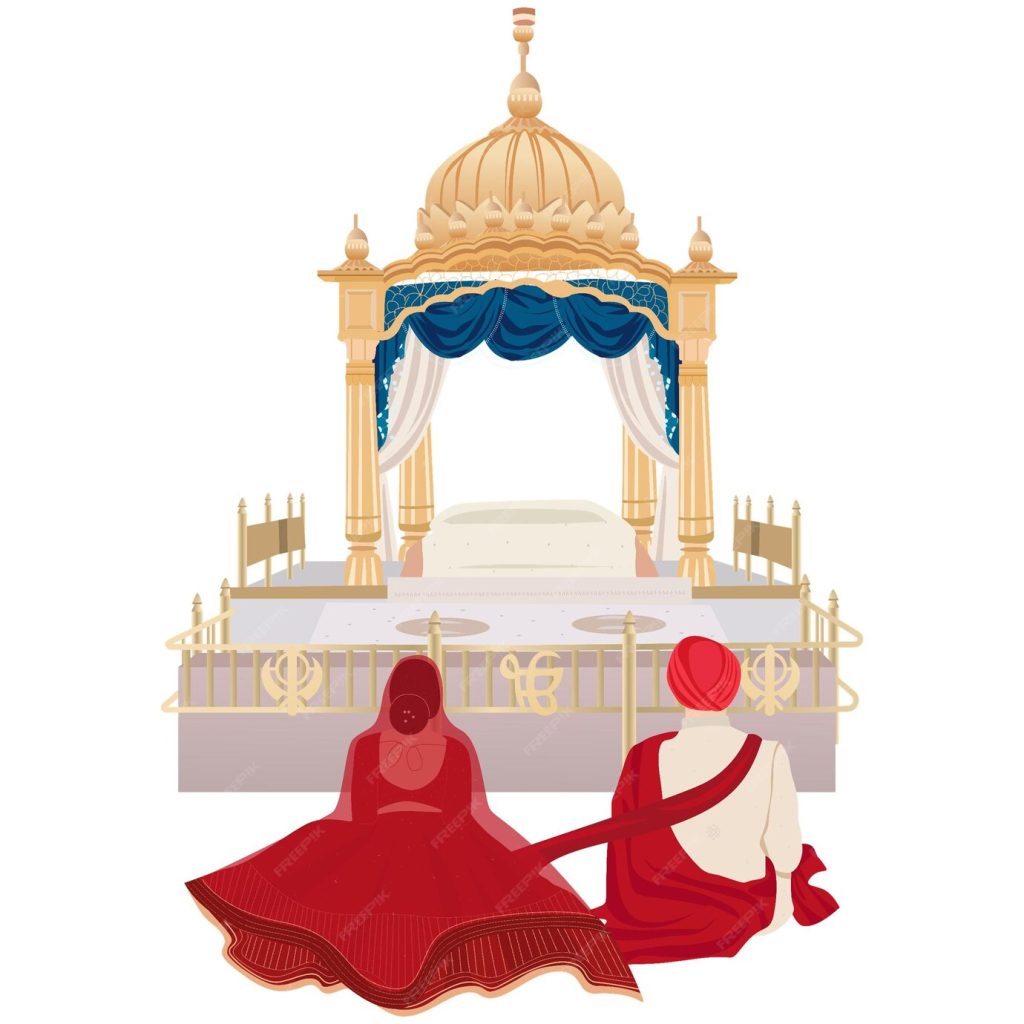ANAND MARRIAGE ACT was passed in 1909 by the Imperial (i.e. GovernorGeneral`s) Legislative Council to establish legal "validity of the marriage ceremony common among the Sikhs called Anand." The origins of marriage by Anand ceremony go back to early Sikhism. The practice which somewhat lapsed during the time of Maharaja Ranjit Singh was sought to be revived as part of the religious reform initiated by the Nirankari movement and followed up especially by the Singh Sabha.
ANAND KARAJ, lit. joyful ceremonial occasion or proceedings is the name given the Sikh marriage ceremony. For Sikhs married state is the norm and the ideal; through it, according to their belief, come the best opportunities for serving God\'s purpose and the well being of humanity, and it affords the best means of fulfilment of individuality and attainment of bliss. Sikhism repudiates monkery, vows of celibacy, renunciation or the sannyas in state. Unlike in the West, most marriages among Sikhs, as also in India as a whole, are arranged.
Explore the sacred Anand Karaj, the Sikh marriage tradition, highlighting its rituals, significance, and historical evolution in Sikhism.
Explore the life of Bhai Gurditta, a devoted Sikh, who played pivotal roles in Sikh history, including the anointment of Guru Tegh Bahadur and Guru Gobind Singh.
Explore how Javand Singh of Barki played a pivotal role in Maharaja Duleep Singh's return to Khalsa at Aden. Delve into this historic Sikh initiation.
Discover the significance of the Sikh naming ceremony, NAMKARAN, where a child's name embodies community, tradition, and spiritual ideals.
Explore the rich history of Pahul in Sikh tradition, a transformative initiation ceremony involving the sacred Khande di Pahul - the Nectar of Immortality.



